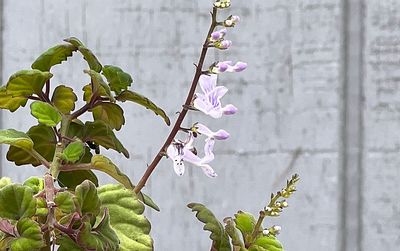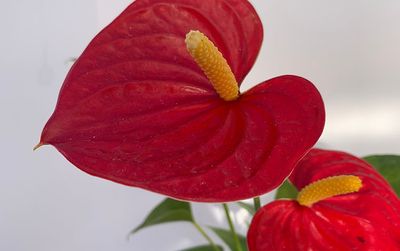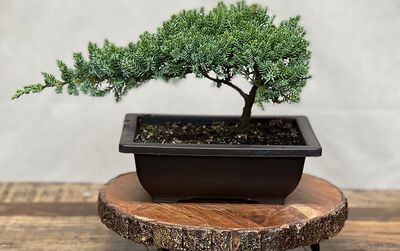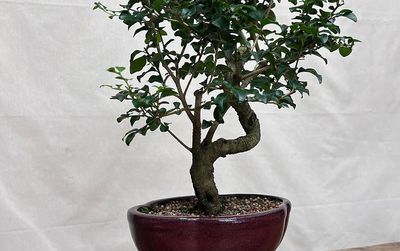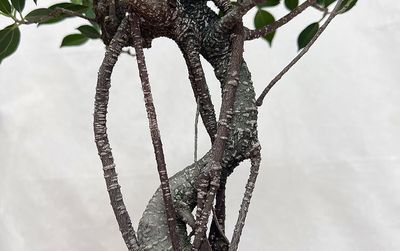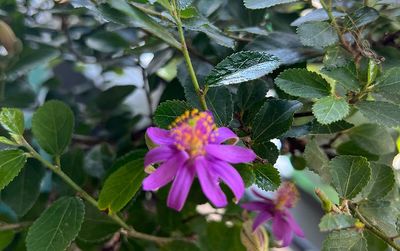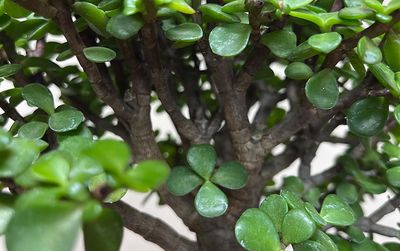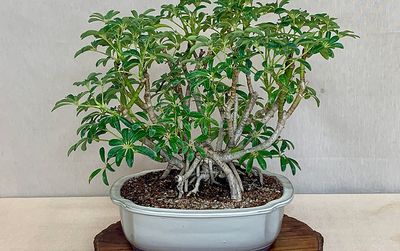Care
Care
As passionate bonsai experts, we understand that each tree is unique and requires specific care to thrive.

Bonsai Tree Care
Caring for a bonsai tree is a special art form that requires a bit more attention than traditional house plants. To keep your bonsai tree healthy and thriving, be sure to provide it with the proper amount of light and water, as well as proper pruning and soil care. With the right care and attention, your bonsai tree can bring years of beauty and tranquility to your home. Don't hesitate to reach out to the experts at Under The Tiny Tree for personalized advice on how to care for your bonsai tree.
Light is essential for the growth and development of your bonsai tree. Different tree species require varying amounts of light, and finding the right balance is crucial. Generally, it's best to place your bonsai tree in a well-lit area, but away from direct sunlight.
Watering is another crucial aspect of bonsai care. Over-watering can cause root rot, while under-watering can lead to dehydration and death. We recommend checking the soil regularly and watering only when it's dry to the touch. Be sure to give your tree the right amount of water, but not too much or too little.
Choosing the right soil for your bonsai tree is essential for its health and longevity. Bonsai trees require soil that provides the right balance of water retention and drainage. Our team can help you select the best soil for your tree and provide instructions for how to properly repot your tree.
Pruning is an important aspect of bonsai tree care. It helps to maintain the tree's shape and promote healthy growth. Our team can provide guidance on how and when to prune your bonsai tree, as well as which tools are best for the job.
How often should I water my bonsai?
The watering frequency varies depending on several factors such as the bonsai species, pot size, and environmental conditions. As a general rule, it's important to monitor the moisture level of the soil and water your bonsai thoroughly once the soil surface feels slightly dry. Avoid overwatering, as this can lead to root rot.
Do indoor bonsai trees require specific lighting conditions?
Yes, indoor bonsai trees need sufficient light to thrive. Place your bonsai near a window where it can receive indirect sunlight. Different tree species have specific light requirements, so it's important to research the lighting needs of your particular bonsai and provide adequate light accordingly.
How often should I fertilize my bonsai?
Fertilizing is crucial for providing essential nutrients to your bonsai. During the growing season, fertilize your bonsai once every two to four weeks with a balanced fertilizer specifically formulated for bonsai plants. Adjust the frequency and strength of fertilization based on the specific needs of your tree.
At Holistic Bonsai, we know how important proper care is to help your bonsai tree thrive. That’s why we’ve created more specific care instructions based on the species of your bonsai. Find your bonsai tree below to learn more!
Fuiken Tea
Carmona retusa, also known as the Fukien tea bonsai, in its "S" styled shape with tiny white flowers makes a great starter tree for any collector or gift. Depending on the culture or beliefs, a Fuiken tree symbolizes harmony and brings good luck.
Bonsai Mint / Vicks Plant
Plectranthus are a Semi succulent in the mint and sage family. Some species are known as Bonsai Mint and Vicks plant. There are 350 species of Plectranthus and most originate from areas in Africa, Australia, India and Madagascar. Considered the healing plant.
Red Anthurium - Flamingo Lily or Painters Pallette
The flamingo Lily is native to Colombia and Ecuador and is a tropical perennial of the Arum family. The flowers of the Anthurium are one of the most long-lasting blooms there are. It symbolizes abundance, happiness and inspires love. It’s heart shaped bloom stands for infinite love, bringing happiness and prosperity to a home and family. Although beautiful, they are toxic to pets and humans if ingested.
Juniper Nana
The Juniper Nana is a low cover shrub (not “mallsai”) native to Japan. It is an outdoor tree and is considered the most popular tree for traditional bonsai. It symbolizes protection and purification of spirit.
Chinese Privet
The Lingustrum or Chinese Privet is a type of shrub or tree that can be grown in many ways. Sot out for its unique flexibility with Bonsai styles and hardiness. The Lingustrum represents: Peace and Harmony.
Ficus Tree w/ Aerial roots
The Ficus is among the most popular indoor bonsai tree species best for beginners. They are part of the genus family of mulberry plants. They can be found in almost every part around the world and are considered very suitable as an indoor bonsai. They represent: abundance and strength.
Lavender Star
The Lavender Star tree is native to Africa and Australia. Also known as African Starbush and Buttonwood; this unique tree produces star shaped flowers that are about an 1” wide in hues of lavender. Easy to care for and with the right conditions will bloom well into the colder months. The Lavender Star also represents spiritual awakening.
Dwarf Jade
The Dwarf Jade tree is unique, in its own way with its soft, fleshy leaves and woody stems. They are very expressive trees that will brighten anyone’s day. It is originally from the regions of South Africa and can be grown from cuttings. "The giving tree" - It is considered the tree of prosperity.
Hawaiian Umbrella
The Hawaiian Umbrella tree is considered a symbol of wealth and prosperity among practitioners of Feng Shui. It is believed to be able to capture negative energy and redistribute positive energy around a room. Not only a lucky tree, but it is also easy to care for.
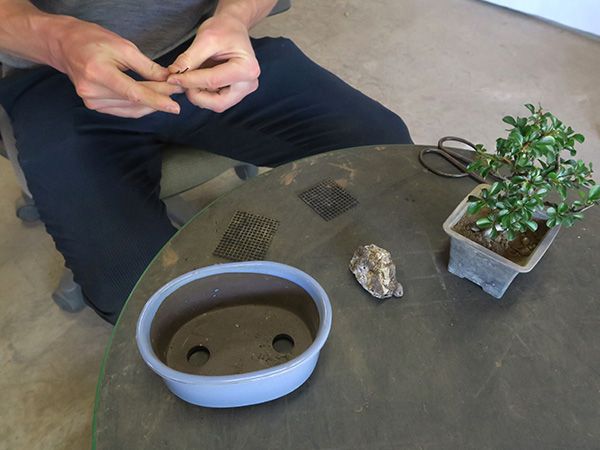
Repotting
Repotting is an essential part of caring for your bonsai tree or succulent. With the proper repotting techniques, your plant can continue to grow and thrive in its new home. It's important to know when and how to repot your bonsai tree or succulent to prevent root-bound plants and promote growth.
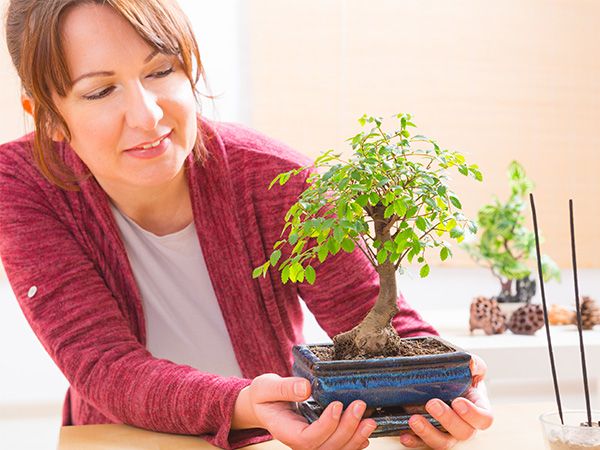
Signs Something Is Wrong With Your Bonsai
Watch for discolored or yellowing leaves, stunted growth, excessive leaf drop, pests, root issues, and abnormal growth as potential signs of trouble with your bonsai. These indicators may suggest problems such as overwatering, underwatering, nutrient deficiencies, pests, root rot, or fungal infections. Address any issues quickly and if you're unsure about the cause or how to fix the problem, reach out to our experts at Holistic Bonsai!
Pruning and Shaping Your Bonsai
Pruning plays a crucial role in maintaining the shape and health of your bonsai tree. Regular pruning helps to control growth, encourages new branching, and enhances the overall aesthetic appeal of your bonsai. Use sharp, clean pruning shears or scissors to carefully remove any dead or overgrown branches, maintaining the desired shape of your bonsai. Additionally, wiring can be used to shape and train the branches of your bonsai tree, creating the desired artistic form.
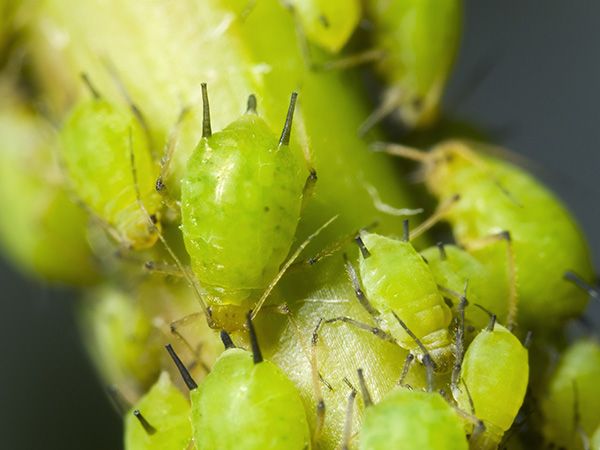
Pests and Diseases
Like any other plant, bonsai trees can be susceptible to pests and diseases. Common pests that may affect your bonsai include aphids, scale insects, and spider mites. Regularly inspect your bonsai for signs of infestation, such as discolored leaves or webbing. If you identify any pests, employ organic pest control methods or consult a professional for guidance.
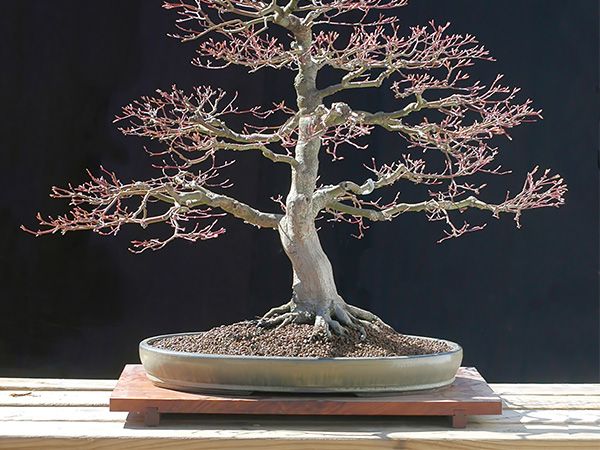
Winter Care
During the winter months, it's essential to provide your bonsai with the proper care to ensure its survival and health. As indoor bonsai trees are not exposed to natural conditions, they may require additional attention during winter. Protect your bonsai from extreme temperature fluctuations, drafts, and dry indoor air by placing it in a suitable location away from cold windows or heating sources. Additionally, reduce watering frequency as the tree's growth slows down during this time. Monitor the soil moisture and water sparingly, only when needed.
Carefully Nurture Your Bonsai Tree
Remember, bonsai care is a lifelong journey of discovery. With regular monitoring, appropriate watering, proper lighting, pruning, repotting when needed, and attentive nurturing, your bonsai will flourish and bring you years of enjoyment and tranquility.
At Holistic Bonsai, we are dedicated to providing you with the best practices and resources to help you create a thriving bonsai. Shop our wide selection of bonsai trees and experience the joy of cultivating these miniature masterpieces.


